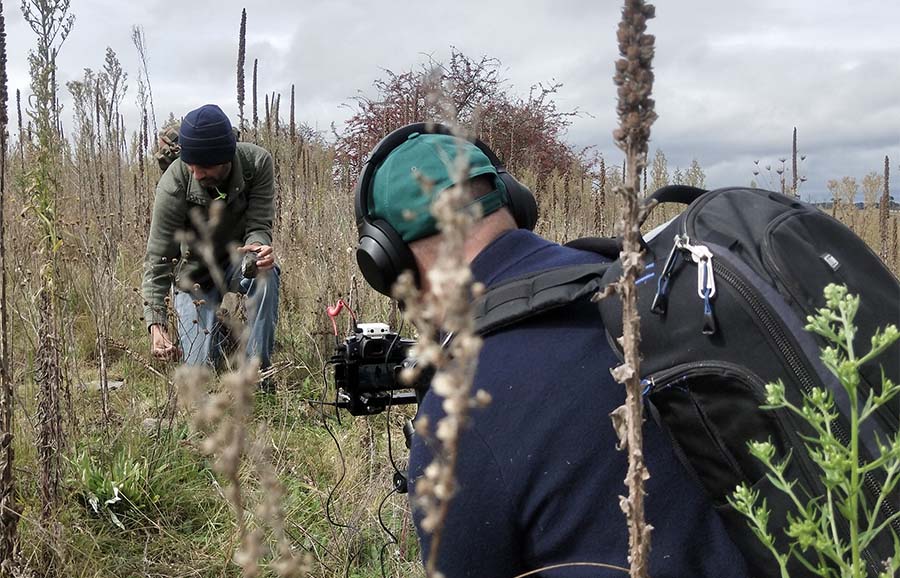When 46,000 years of Aboriginal culture was destroyed in 2020 as a result of Rio Tinto’s decision to blow up a sacred site in the Juukan Gorge, University of New England (UNE) geologist and palaeontologist, Dr Marissa Betts, felt a responsibility as an earth science educator to try and prevent something like this happening again.
“Our geoscience graduates will go on to fill key roles in industry, research and teaching, and so we have the capacity to shape the future of geoscience in Australia,” she says.
“I want UNE to graduate geoscientists who understand the deep significance of cultural sites and who, if faced with such decisions in their careers, will make choices that serve to protect these places.”
To bring to light the fundamental connections between geology, landscape and culture, Dr Betts has directed and produced a short film called ROLA (Stone)*.
ROLA (Stone) trailer
To do this, she brought together a team of experts, Anaiwan Elders and knowledge holders including UNE’s Cultural Heritage Advisor and Anaiwan Elder Steve Ahoy, Anaiwan Elder and Initiated Knowledge Holder Les Ahoy, UNE geologists Dr Luke Milan and Dr Tim Chapman, and UNE professional staff member and filmmaker, Mike Terry.
In the film, Les shares three Anaiwan Dreaming stories about important local areas and rock formations—Bulagaranda (Mt. Yarrowick), Gattamburrumbee (Mt. Duval), and Dangar’s Gorge—explaining how geology is key to Aboriginal culture.
“Rocks are really important to our culture because they help us with direction, they help us with our shelter, but they also are integral to our creation stories because they give us the physical evidence of that story coming to life,” says Les.

Image: In the film, Anaiwan Elder Les Ahoy (pictured) shares the creation story of three important local areas and rock formations, including Bulagaranda (Mt. Yarrowyck), which can be seen in the distance.
The film is set to become a key component of UNE’s first-year geoscience teaching which will be a valuable primer for students before they embark on fieldwork for the first time.
“All of the sites we filmed at were within a 40-50km radius and at the end of each filming day with Les and Steve, the depth of cultural knowledge they shared was remarkable,” says ROLA (Stone)’s Director of Photography, Mike Terry.
“If one were to pull that radius out, I suspect it would be quite staggering to realise how many other sources of specific and nuanced knowledge pertaining to the landscape exist.”
UNE geoscience students are already saying the film has had a significant impact on them after watching it during the recent Intensive Schools.
“I absolutely loved this film. The marrying of the geological landscape with Aboriginal Dreamtime stories was such an inspiration and one I hadn’t connected together myself prior to seeing this, despite how obvious it should have been given my interest in both,” says first-year Bachelor of Geoscience student, Rachel Povey.

Image: 'ROLA (Stone)' Director of Photography, Mike Terry, filming a scene with UNE's Cultural Heritage Advisor and Anaiwan Elder, Steve Ahoy, at Sailsbury Court, NSW.
ROLA (Stone) has recently gained international recognition after it was listed as a finalist film in the inaugural 2022 Earth Futures Film Festival, a UNESCO-sponsored festival designed to showcase the global importance of Earth Science. With a chance the film will be screened at the in-person events in New York, Paris and Sydney later in the year, Dr Betts hopes the widespread publicity the shortlisting will bring will encourage more people to understand the relationship between geoscience and Aboriginal culture.
“Geoscience is essential for a sustainable future. The world relies increasingly on materials derived from the Earth to make sustainable technologies, like electric cars, but when it comes to impacts on people and communities, we must do better.
“My wish is that ROLA (Stone) imparts values that our students take with them into their careers in industry, exploration, research, teaching and beyond.”
ROLA (Stone) can be viewed in full on the Earth Futures Film Festival website. Make sure you vote for it in the People's Choice category here.
*‘Rola’ is the Anaiwan word for ‘stone’.


